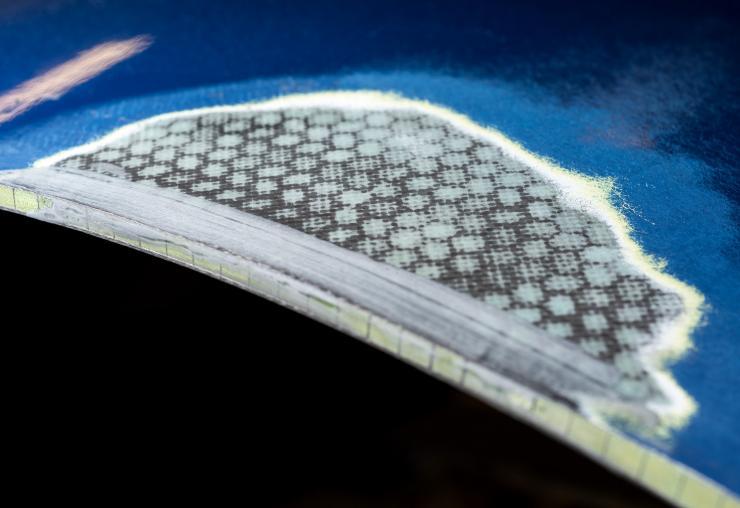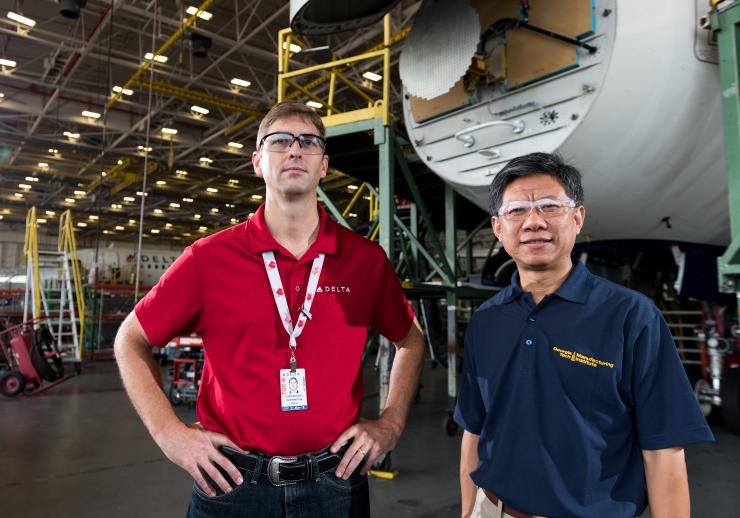Developing New Techniques for Repairing Composite Aircraft Components
Dec 15, 2016 — Atlanta, GA

Sanding away the paint reveals the honeycomb pattern of this composite aircraft part. Georgia Tech is working with Atlanta-based Delta Air Lines on procedures for maintaining such composite components. (Credit: Rob Felt, Georgia Tech)
When Atlanta-based Delta Air Lines Inc. announced plans to purchase scores of new airplanes from Airbus and Bombardier, the carrier made clear its focus was on remaking its fleet with lighter, more fuel-efficient aircraft.
Aerospace manufacturers relied heavily on composite materials for this latest generation of passenger jets. While composite parts have been used for decades, today as much as half of all airplane components can be made of composites, including major structures such as wings and the fuselage.
For airlines, the shift to composites creates an opportunity to rethink the repair and maintenance operations needed to keep jets in top form. Although the first of Delta’s new jets won’t enter service until fall 2017, the airline is already searching for better ways to maintain and repair composite aircraft parts — which are very different from the metal parts it has been maintaining for years
The airline is partnering with Georgia Tech to take a close look at current methods used to repair composite parts and identify ways to increase efficiency and bring down costs.
“Airlines want to create their own know-how on how to fix these structures because it’s cheaper and probably faster,” said Chuck Zhang, a professor in the Stewart School of Industrial and Systems Engineering. “But improved technologies are needed to help in the repair of composite parts. Much of it today is done by hand.”
Read the complete article in Research Horizons magazine

Georgia Tech is working with Atlanta-based Delta Air Lines on procedures for repairing composite parts used in aircraft. Shown in a Delta maintenance facility are Todd Herrington, general manager of fleet projects at the company, and Chuck Zhang, a professor in Georgia Tech's Stewart School of Industrial and Systems Engineering. (Credit: Rob Felt, Georgia Tech)
Josh Brown
Research News
404-385-0500





